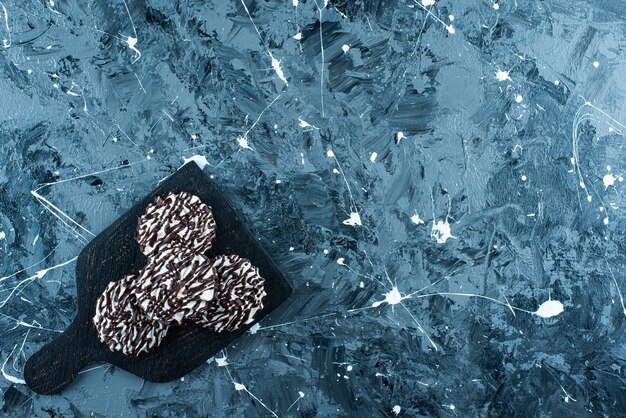When it comes to concrete floor finishes, two popular options consistently stand out: epoxy coatings and concrete polishing. Both offer distinctive advantages in terms of aesthetics, durability, and performance. However, one crucial factor that often influences the decision-making process is maintenance—specifically, the ease of cleaning. In this comprehensive comparison, we'll explore how epoxy coatings and polished concrete measure up when it comes to keeping your floors clean and pristine.
Understanding the Basics
Before diving into cleaning considerations, let's briefly review what each option entails:
Epoxy Coatings: These are applied as liquid layers on top of concrete surfaces, creating a thick, seamless coating that bonds with the concrete. Epoxy coatings can include decorative flakes, metallic pigments, or other additives for customized appearances.
Concrete Polishing: This process involves mechanically grinding concrete with progressively finer diamond abrasives until the desired level of shine is achieved. Chemical densifiers are applied during the process to harden the concrete surface. Unlike epoxy, polishing doesn't add a coating but transforms the existing concrete.
Cleaning Epoxy-Coated Concrete
Advantages for Cleaning
Non-Porous Surface: Epoxy creates a completely sealed surface that prevents liquids, chemicals, and contaminants from penetrating. Spills remain on the surface, making them easy to wipe away before they can cause staining.
Chemical Resistance: High-quality epoxy coatings resist damage from a wide range of chemicals, including cleaning agents, oils, and acids. This allows for the use of stronger cleaning solutions when necessary without damaging the floor.
Seamless Application: Without grout lines or joints (except for necessary expansion joints), epoxy floors eliminate places where dirt and bacteria can accumulate, making thorough cleaning simpler and more effective.
Cleaning Challenges
Scratch Visibility: While epoxy is durable, scratches can be more visible on glossy epoxy surfaces, especially with darker colors. These scratches might trap dirt and require occasional attention.
Potential for Surface Hazing: Improper cleaning techniques, such as using harsh abrasives, can create a hazy appearance on epoxy floors over time, diminishing their glossy appeal.
Cleaning Polished Concrete
Advantages for Cleaning
Dust Resistance: Properly polished concrete significantly reduces concrete dusting, a common issue with untreated concrete that creates maintenance headaches.
Minimal Maintenance Products: Polished concrete typically requires fewer specialized cleaning products. Most routine cleaning can be accomplished with water and a neutral pH cleaner.
Scratch Concealment: The natural variations in polished concrete tend to hide minor scratches and imperfections better than uniform epoxy surfaces, potentially reducing the frequency of touch-ups.
Cleaning Challenges
Semi-Permeable Nature: Even highly polished concrete remains somewhat permeable. Without proper sealing or maintenance, certain substances may penetrate and stain the concrete if not cleaned promptly.
Sensitivity to Acids: Acidic substances (like vinegar, citrus cleaners, or certain chemicals) can etch polished concrete surfaces, creating dull spots that require professional restoration.
Regular Maintenance Requirements: To maintain its shine and protection, polished concrete typically requires periodic application of maintainers or conditioners that enhance stain resistance and gloss retention.
Side-by-Side Cleaning Comparison
| Cleaning Aspect | Epoxy Coatings | Polished Concrete |
|---|---|---|
| Daily Cleaning | Dust mopping, occasional damp mopping with mild cleaner | Dust mopping, occasional damp mopping with pH-neutral cleaner |
| Spill Response | Immediate wipe-up; highly stain-resistant | Immediate wipe-up required; more susceptible to staining from certain substances |
| Chemical Tolerance | High resistance to most chemicals | Susceptible to etching from acids; moderate chemical resistance |
| Maintenance Frequency | Regular cleaning; occasional recoating every 5-10 years depending on traffic | Regular cleaning; periodic treatment with concrete conditioners every 3-6 months in high-traffic areas |
| Equipment Needs | Standard cleaning equipment; no specialized tools required | Standard cleaning equipment; floor burnisher beneficial for maintaining shine |
Factors That Influence Cleaning Ease
Traffic Volume
In high-traffic environments, epoxy coatings might show wear paths more quickly than polished concrete, potentially requiring more frequent touch-ups in specific areas. Conversely, polished concrete may require more frequent application of maintainers in high-traffic zones.
Environment Type
Industrial Settings: In environments with chemical exposure, oil, or grease, epoxy coatings generally offer superior protection and easier cleaning.
Retail or Office Spaces: For areas where routine dirt and dust are the primary concerns, both solutions work well, with polished concrete potentially requiring less specialized care.
Gloss Level
Higher gloss finishes—whether epoxy or polished concrete—tend to show dust, footprints, and smudges more readily, potentially increasing the perceived need for cleaning, even if the floor itself isn't actually dirty.
Making the Right Choice for Your Needs
When considering ease of cleaning as your primary factor, here are some guidelines:
Choose Epoxy Coatings If:
- Your environment deals with frequent chemical spills or staining agents
- You require a completely non-porous surface (such as in healthcare or food processing)
- You prefer less frequent but more intensive maintenance (occasional recoating rather than regular treatments)
Choose Polished Concrete If:
- You prefer using minimal specialized cleaning products
- Your facility has fluctuating humidity levels (polished concrete allows minor vapor transmission)
- You want a floor that can be easily refinished multiple times throughout its lifetime
Conclusion
Both epoxy coatings and polished concrete offer distinct advantages when it comes to cleaning and maintenance. Epoxy provides superior stain resistance and a completely sealed surface, making it ideal for environments where spills and contamination are concerns. Polished concrete offers a more breathable solution that requires simple cleaning protocols but may need more frequent maintenance treatments to preserve its protective properties.
The best choice ultimately depends on your specific environment, aesthetic preferences, and maintenance capabilities. By understanding the cleaning requirements of each option, you can select the floor finish that will provide the optimal balance of beauty, performance, and ease of maintenance for your specific needs.
For personalized guidance on choosing between epoxy coatings and polished concrete for your facility, contact our flooring specialists for a comprehensive assessment of your specific requirements.

